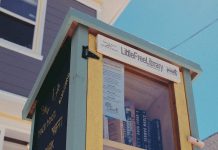Slip resistance is a crucial component in floor safety, functioning as a key factor in avoiding mishaps and injuries. Slips and falls can occur in various settings, including homes, work environments, and public spaces. These events not only endanger individuals however likewise have substantial consequences for organizations, including legal liabilities, increased insurance coverage costs, and damage to reputation.
Introduction of Slip-Related Incidents and Their Impact on Companies and Individuals
Office mishaps caused by slipping are a leading source of injuries, leading to serious results like damaged bones, head injury, and lasting health impairments. The economic toll on business can be significant, including medical costs, decreased performance, and possible lawsuits. As a result, stressing slip avoidance is vital for securing employees’ wellness and a business’s bottom line.
Value of Thorough Examination in Fulfilling Regulatory Safety Requirements
Decreasing the risks of slips requires strenuous examination of flooring products. Constant testing of slip resistance makes it possible for the detection of prospective threats before they result in occurrences. Furthermore, complying with requirements like AS 4586:2013 is important, as it not just boosts safety however also guards companies from potential lawsuits coming from non-compliance. By carrying out comprehensive testing, organizations can take a proactive approach to developing more secure areas for everyone.
This foundation sets the stage for a much deeper dive into the specific standards governing slip resistance in Australia, making sure that all stakeholders comprehend their duties in preserving safe flooring practices.
Understanding Slip Resistance Standards in Australia
Ensuring floor security in Australia needs a deep understanding of slip resistance standards, especially the Australian Requirement AS 4586:2013. This standard details essential requirements that are aimed at minimizing slip-related incidents across numerous environments, consisting of commercial and public areas.
Overview of AS 4586:2013 Requirements
AS 4586:2013 defines testing approaches and category systems to examine slip resistance under various conditions. It categorizes floorings based on their frictional properties when wet or dry, which is important for figuring out safe use in varied circumstances. Compliance with these guidelines not just promotes security but also helps businesses avoid legal liabilities occurring from mishaps.
Legal Standards for Guaranteeing Safe Floor Covering Issues
The regulative structure surrounding floor security in Australia incorporates both national and state regulations. These rules mandate that businesses abide by specific safety requirements to protect consumers and employees. Regular audits and compliance checks are essential to make sure that floor covering materials satisfy the required slip resistance levels.
Legal Ramifications of Non-Compliance
Failure to comply with slip resistance requirements can result in severe repercussions, consisting of fines, lawsuits, and increased insurance coverage premiums. Services might be held accountable for negligence if a mishap takes place due to insufficient slip resistance, highlighting the importance of proactive steps in maintaining compliance.
The intricacies of slip resistance testing techniques exposes the significance of comprehending these standards, as they play an important role in maintaining safety throughout different environments.
ATTAR (Advanced Technology Testing & Research)
44/48 Rocco Dr, Scoresby VIC 3179, Australia
+61 1300 139 155
https://maps.app.goo.gl/nw9QoQjQbhnhr1pG7
For more information visit: Slip Testing















